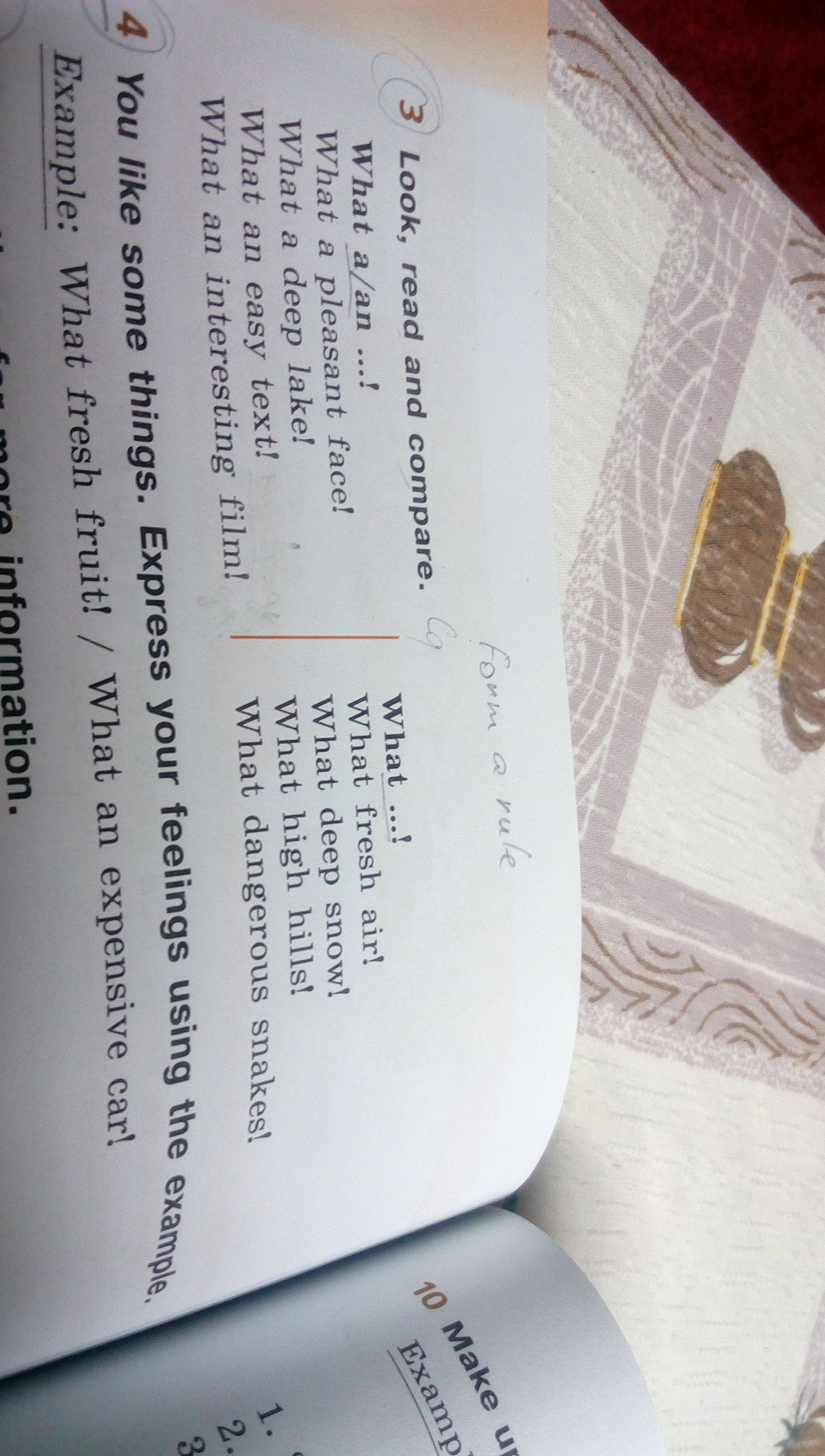Предмет: Английский язык,
автор: стразочканапопе
Сформулировать правило на эту тему. Долго пыталась понять, почему здесь артикль нужен, а там нет, решила написать сюда.
Приложения:

Ответы
Автор ответа:
1
не ставят при абстрактном понятии(например: я люблю музыку. не что то определённое, а просто музыку)
2.перед неисчисляемыми массой,веществом(например:мне нравится горячий чай.я не уточняю количество)
3.перед множественным числом
4.перед количественным числительным,(я живу на пятом этаже)
5.перед указательными местоимениями(я приеду на следующей неделе)
6.перед названиями городов,имён,фамилий,гор,морей...
7.перед названиями дней недели,месяцев, времён года
2.перед неисчисляемыми массой,веществом(например:мне нравится горячий чай.я не уточняю количество)
3.перед множественным числом
4.перед количественным числительным,(я живу на пятом этаже)
5.перед указательными местоимениями(я приеду на следующей неделе)
6.перед названиями городов,имён,фамилий,гор,морей...
7.перед названиями дней недели,месяцев, времён года
стразочканапопе:
Огромное спасибо!
удачи!
Похожие вопросы
Предмет: Геометрия,
автор: Agduenxij3id
Предмет: Алгебра,
автор: andrukorzun
Предмет: Литература,
автор: evakontorina
Предмет: Математика,
автор: kseniashakhova19
Предмет: Английский язык,
автор: viola23413